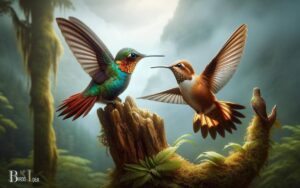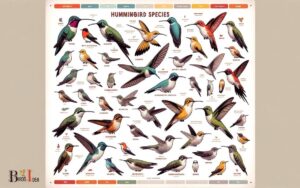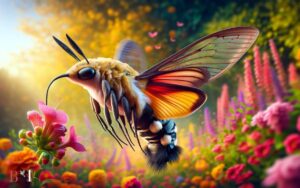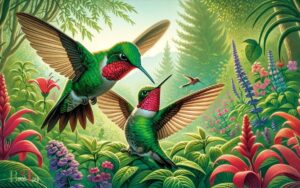Anna’s and Costa’s Hummingbird: A Comparison Guide!
Anna’s Hummingbird (Calypte anna) and Costa’s Hummingbird (Calypte costae) are two vibrant species of hummingbirds native to North America.
Anna’s Hummingbird is primarily found along the Pacific Coast and is renowned for its emerald green back and rose-pink throat.
Costa’s Hummingbird, on the other hand, resides in the arid regions of the southwestern United States and Baja California, easily recognized by its purple cap and throat.
Both species display dazzling aerial maneuvers and play pivotal roles in pollination and maintaining insect populations.
Anna’s Hummingbird
Costa’s Hummingbird
Discovering the iridescent beauty and unique behaviors of Anna’s and Costa’s hummingbirds highlights the biodiversity of North American avian life.
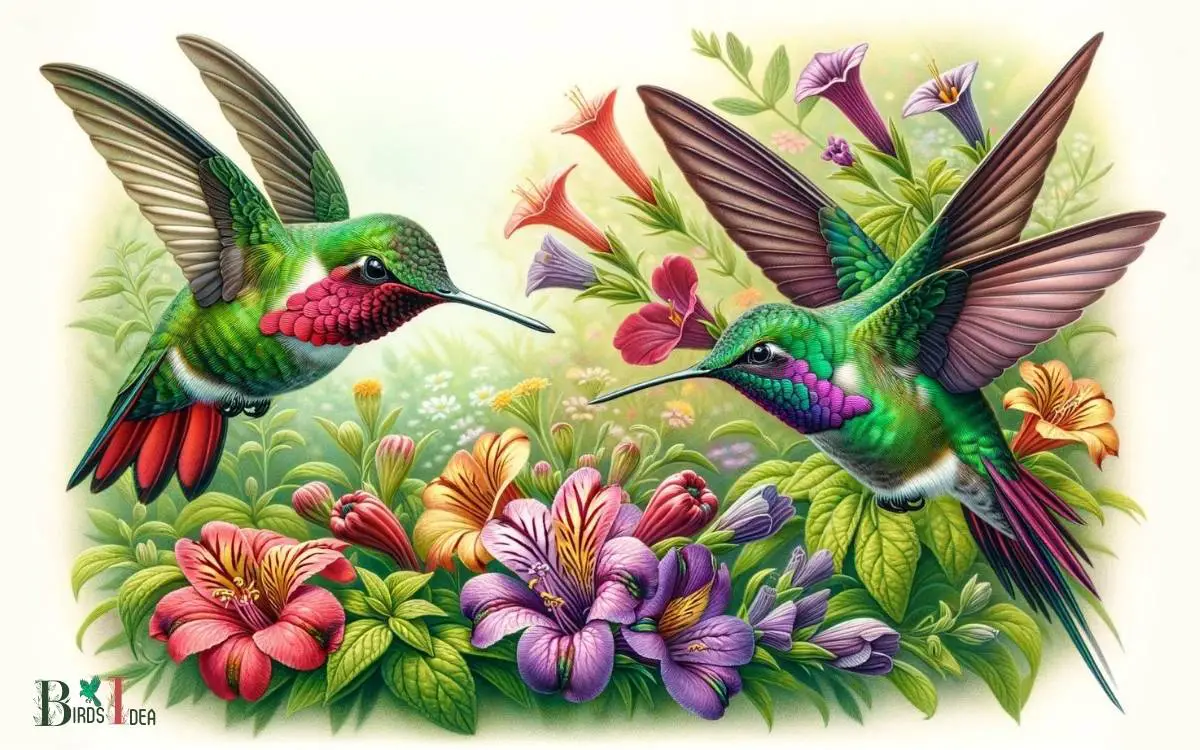
Key Takeaway
9 Features of Anna’s and Costa’s Hummingbird
| Feature | Anna’s Hummingbird (Calypte anna) | Costa’s Hummingbird (Calypte costae) |
|---|---|---|
| Size | 3.9 to 4.3 inches (10-11 cm) | 3 to 3.5 inches (7.6-8.9 cm) |
| Primary Colors | Emerald green and rose-pink | Iridescent green with purple crown |
| Habitat | Coastal and urban areas | Southwestern deserts and chaparral |
| Range | Western North America | Southwestern U.S., Baja California |
| Migration | Non-migratory, local movements | Partial migrant, altitudinal shifts |
| Diet | Nectar, insects | Nectar, insects |
| Nesting | Tree branches, shrubs, buildings | Trees, shrubs, cacti |
| Breeding Season | December to June | February to May, varies by location |
| Unique Characteristics | Mating display dive | Tail is shorter than the wing |
Physical Characteristics
Described as being small and agile, Anna’s and Costa’s hummingbirds possess distinct physical characteristics that set them apart from other bird species.
These hummingbirds are approximately 3 to 3.5 inches in length, with a wingspan of about 4 inches.
Their vibrant plumage is a distinguishing feature, with the male Anna’s hummingbird displaying iridescent emerald green feathers on its back and head, while the male Costa’s hummingbird exhibits a striking purple crown and gorget.
Both species have a slender, slightly down-curved bill designed for nectar feeding. Their rapid wing beats, averaging 50 to 80 times per second, enable them to hover and even fly backward.
These physical attributes are essential for their specialized feeding and flight behaviors, which are unique to hummingbirds.
Habitat and Range
Inhabiting diverse ecosystems, the Anna’s and Costa’s hummingbirds thrive in regions with abundant nectar sources and suitable nesting sites.
The Anna’s hummingbird is primarily found along the western coast of North America, from southern Alaska to Baja California, while the Costa’s hummingbird is concentrated in the southwestern United States and northern Mexico.
Both species favor habitats such as open woodlands, gardens, and scrublands, where they can access a variety of flowering plants for nectar. They are also known to inhabit urban and suburban areas with suitable vegetation.
These hummingbirds are well adapted to a range of elevations, from sea level up to around 10,000 feet, allowing them to take advantage of diverse ecological niches.
Their ability to thrive in different environments contributes to their widespread distribution within their respective ranges.
Feeding Behavior
Thriving on a diet primarily consisting of nectar, Anna’s and Costa’s hummingbirds visit flowers for feeding multiple times throughout the day, ensuring they meet their high metabolic demands.
Their feeding behavior is fascinating and essential for their survival:
- Specialized beak: Their long, slender bills and extendable, straw-like tongues allow them to reach deep into flowers to access nectar, their primary energy source.
- Rapid wing beats: Hummingbirds have an incredibly high metabolism and beat their wings at an astonishing rate of 70 to 80 times per second, requiring them to feed frequently to sustain their energy levels.
- Insect consumption: In addition to nectar, hummingbirds also consume small insects and spiders, providing essential proteins, fats, vitamins, and minerals.
- Territorial feeding: Both Anna’s and Costa’s hummingbirds fiercely defend feeding territories, ensuring a consistent and reliable food source.
Breeding and Nesting
Both Anna’s and Costa’s hummingbirds exhibit distinct breeding and nesting behaviors that are essential for the continuation of their species.
Mating displays are common in both species, with males performing elaborate aerial displays to attract females.
Anna’s hummingbirds are known for their spectacular courtship dives, while Costa’s hummingbirds perform intricate shuttle flights.
After mating, the female constructs the nest using plant fibers, downy feathers, and spider silk, binding it together with sticky tree resin.
The nests are typically located on a horizontal tree branch or a shrub, providing protection from predators.
Anna’s hummingbirds often reuse their nests for subsequent broods, while Costa’s hummingbirds tend to build new nests for each brood.
Understanding these breeding and nesting behaviors is crucial for the conservation and management of these beloved avian species.
Vocalizations and Communication
Hummingbirds, including Anna’s and Costa’s species, are known for their remarkable vocalizations and communication abilities.
Their vocal mimicry in particular is a fascinating aspect of their behavior, allowing them to imitate the sounds of other birds and even non-biological noises.
Additionally, these birds utilize their songs to communicate with potential mates, establish territories, and defend against intruders, making their vocalizations a crucial part of their social interactions.
Vocal Mimicry in Birds
Once considered a rare behavior, vocal mimicry in birds has been increasingly recognized as a complex and adaptive form of communication.
Birds utilize vocal mimicry for various purposes, including:
- Attracting Mates: Some bird species mimic the calls of other desirable mates to attract them.
- Defending Territory: Mimicking the calls of potential competitors can help birds defend their territory by creating confusion or intimidation.
- Avoiding Predators: Birds may mimic the calls of predators to warn other birds of potential danger in the area.
- Social Integration: Vocal mimicry can also help birds integrate into social groups by imitating the calls of group members.
This behavior showcases the cognitive abilities of birds and highlights the intricate ways in which they use vocalizations for survival and social interaction.
Communication Through Song
Hummingbirds communicate through song by producing complex vocalizations that convey messages related to territory defense, mating, and social integration.
These vocalizations are essential for maintaining social structure and ensuring successful reproduction. The songs of hummingbirds are characterized by rapid trills, whistles, and chirps, often at frequencies beyond the range of human hearing.
Males use their songs to establish and defend their territories, to attract mates, and to warn off potential rivals. Females, on the other hand, may use their vocalizations to indicate their receptiveness to mating or to communicate with their offspring.
The intricate nature of these vocalizations reflects the importance of acoustic communication in the lives of hummingbirds, enabling them to navigate complex social interactions and ensure their reproductive success.
Migration Patterns
As the seasons change, Anna’s and Costa’s hummingbirds migrate to different locations in response to variations in food availability and temperature. Their migration patterns are fascinating and essential for their survival.
Here are some key points to understand their migration:
- Seasonal Shifts: Hummingbirds migrate from breeding grounds in the northern regions to wintering grounds in the south during fall and return in spring.
- Food Availability: The primary reason for migration is the availability of nectar-producing flowers, which are their main food source.
- Temperature Sensitivity: Hummingbirds are sensitive to temperature changes and migrate to areas where they can find suitable temperatures for their survival.
- Migratory Routes: They follow specific routes, often along coastlines or mountain ranges, to optimize their energy expenditure during migration.
Understanding these migration patterns is crucial for conservation efforts and ensuring the availability of suitable habitats for these remarkable birds. In the subsequent section, we will explore how to attract these hummingbirds to your garden.
Attracting to Your Garden
To attract Anna’s and Costa’s hummingbirds to your garden, you can create a welcoming environment by planting native nectar-producing flowers.
These hummingbirds are particularly attracted to bright tubular flowers such as fuchsia, penstemon, and sage.
Providing a variety of flower shapes and colors will also help in attracting them. Additionally, having a water feature such as a small fountain or birdbath will provide the hummingbirds with a water source for drinking and bathing.
It’s important to avoid using pesticides in your garden as they can be harmful to hummingbirds and their food sources.
By creating a habitat that mimics their natural environment, you can attract these beautiful birds to your garden and provide them with a safe space to feed and rest.
| Flower Type | Color |
|---|---|
| Fuchsia | Pink and Purple |
| Penstemon | Red, Pink, Blue |
| Sage | Purple, Blue |
Conclusion
The Anna’s and Costa’s Hummingbird is a species with distinct physical characteristics, a wide habitat range, unique feeding behavior, and complex breeding and nesting habits.
Their vocalizations and communication patterns are intricate, and their migration patterns are fascinating. To attract them to your garden, consider planting a variety of nectar-rich flowers and providing a water source.
Overall, these hummingbirds are fascinating creatures that bring beauty and life to their surroundings.


